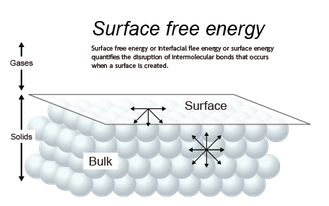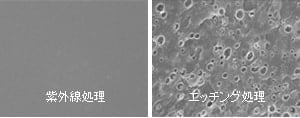UV irradiation with low-pressure mercury lamps can be used to clean the surface of irradiated materials and improve their wettability. The most common evaluation methods are surface molecular composition analysis and wettability evaluation (surface free energy and contact angle).
Surface free energy measurement
Surface free energy corresponds to the surface tension of a liquid in a solid, and is the molecular energy of the solid surface itself. Surface tension is usually expressed in units of mN/m, whereas surface free energy is expressed as energy per unit area in mJ/m2.
By measuring the contact angle of a material surface with two or more drops of a probe solution and determining values such as dispersion, dipole force, and hydrogen bonding force of the material surface, wettability・hydrophilicity, detergency・adhesiveness, etc. are investigated.

Example of UV surface modification
Cleaning and modification effect data
Cleaning and modification effects of UV ozone cleaning and modification equipment (contact angle method). Changes in the degree of cleaning and modification with irradiation time are graphed.
Evaluation with wetting reagents
A wettability modification reagent used to determine the degree of wettability modification of a surface.Known by trade names such as "DynePen", it is a simple way to measure surface free energy.
Surface damages
Comparison of the effects of UV treatment and etching treatment on surfaces.

| Lamp | :110W Synthetic quartz lamps |
| Sample | :ABS |
| Exposure time | :30 sec |
| Illumination distance | :10mm |


